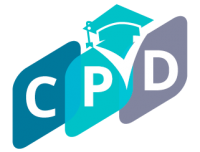Introduction:
In the age of digital learning, students often find themselves immersed in screens for extended periods. While technology has revolutionized education, it’s essential to strike a balance between leveraging digital resources and safeguarding one’s well-being. In this article, we will explore the intersection of studying and digital well-being, providing insights into managing screen time for optimal learning outcomes.
- Understanding the Impact of Prolonged Screen Time: Prolonged exposure to screens can have physical and mental implications. The term “digital eye strain” encompasses a range of symptoms, including eye fatigue, headaches, and dry eyes, associated with extended screen use. Additionally, excessive screen time can contribute to sedentary behavior, impacting overall physical health. It’s crucial to recognize the potential consequences of extended screen time and take proactive measures to mitigate these effects.
- Implementing the 20-20-20 Rule: The 20-20-20 rule is a simple yet effective strategy to alleviate digital eye strain. Every 20 minutes of screen use, take a 20-second break and focus on something 20 feet away. This brief pause allows your eyes to relax and reduces the strain associated with continuous screen exposure. Incorporating the 20-20-20 rule into your study routine can contribute to eye comfort and long-term visual well-being.
- Establishing Screen Time Limits: Setting explicit screen time limits is a proactive approach to managing digital well-being. Establish daily or weekly limits for study-related screen activities, ensuring there are dedicated breaks for non-screen activities. This could include reading physical books, engaging in outdoor activities, or practicing relaxation techniques. Utilize built-in device features or third-party apps to enforce screen time limits and receive notifications when you approach or exceed the defined thresholds.
- Prioritizing Active Breaks: Breaks are essential for both physical and mental well-being during study sessions. Instead of passively scrolling through social media or watching videos during breaks, prioritize active and screen-free activities. Stretching, walking, or engaging in brief exercises can counteract the sedentary effects of prolonged screen time. Active breaks not only contribute to physical health but also refresh the mind, enhancing overall study effectiveness.
- Incorporating Mindful Practices: Mindfulness practices can mitigate the negative effects of screen time on mental well-being. Consider incorporating brief mindfulness or meditation sessions into your study routine. Apps and online resources provide guided mindfulness exercises that can be accessed on various devices. Mindful practices can improve focus, reduce stress, and promote a sense of balance in the midst of digital learning.
- Optimizing Screen Settings: Adjusting screen settings can significantly contribute to eye comfort. Ensure that your screen brightness is appropriate for the ambient lighting conditions, and consider using “night mode” settings during evening study sessions. Position your screen at eye level to reduce strain on your neck and shoulders. Regularly clean your screen to eliminate dust and smudges that can contribute to visual discomfort.
- Engaging in Paper-Based Note-Taking: While digital note-taking has become prevalent, incorporating paper-based note-taking methods can offer a respite from constant screen use. Whether it’s jotting down key points, sketching diagrams, or creating mind maps on paper, the tactile engagement provides a break for your eyes and allows for a more immersive and varied learning experience. Experiment with hybrid note-taking approaches that combine digital and analog methods to strike a balance.
- Creating a Distraction-Free Digital Environment: Digital distractions can significantly impact study efficiency and well-being. Establish a distraction-free digital environment by closing unnecessary tabs, turning off non-essential notifications, and using website blockers or apps that limit access to distracting websites during study sessions. A focused digital environment contributes to a more productive and mentally healthy studying experience.
- Prioritizing Sleep Hygiene: Prolonged screen time, especially before bedtime, can interfere with sleep quality. Blue light emitted by screens can suppress melatonin production, making it harder to fall asleep. Establish a digital curfew by minimizing screen use at least an hour before bedtime. Prioritize sleep hygiene to ensure adequate rest, as sufficient sleep is crucial for cognitive function and overall well-being.
- Balancing Synchronous and Asynchronous Learning: For students engaged in online courses or virtual classrooms, striking a balance between synchronous (real-time) and asynchronous (self-paced) learning is essential. Synchronous learning often involves extended screen time during live sessions, while asynchronous learning allows for more flexible engagement. Schedule breaks and offline activities between synchronous sessions to prevent continuous screen exposure.
- Investing in Blue Light Blocking Technology: Blue light blocking technology, available in the form of screen protectors, glasses, or device settings, can reduce the potential negative effects of blue light on sleep and eye strain. Consider incorporating blue light blocking solutions into your digital setup to enhance both visual and circadian well-being.
- Seeking Professional Guidance: If you experience persistent symptoms such as eye strain, headaches, or disrupted sleep, consider seeking professional guidance. An eye examination can identify potential issues related to prolonged screen use, and healthcare professionals can provide personalized recommendations for mitigating discomfort and promoting digital well-being.
Conclusion:
In the digital age, effective studying requires a conscious effort to manage screen time for optimal learning outcomes and overall well-being. By implementing strategies such as the 20-20-20 rule, establishing screen time limits, prioritizing active breaks, incorporating mindful practices, optimizing screen settings, engaging in paper-based note-taking, creating a distraction-free digital environment, prioritizing sleep hygiene, balancing synchronous and asynchronous learning, investing in blue light blocking technology, and seeking professional guidance when needed, students can navigate the digital landscape mindfully. Balancing the benefits of technology with proactive measures for digital well-being ensures a harmonious and sustainable approach to learning in the digital era.
